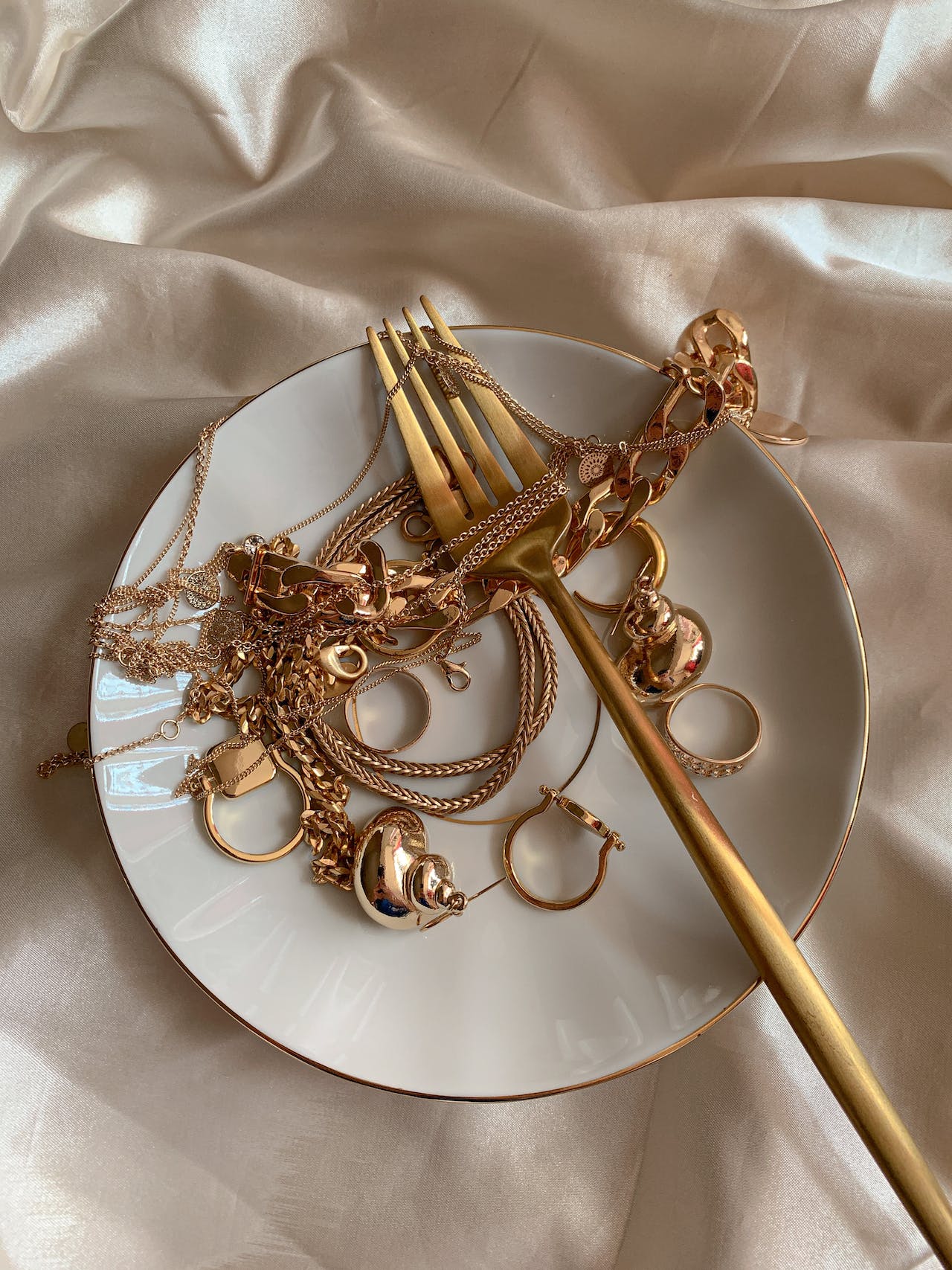In the ever-evolving landscape of fashion, jewelry serves as an essential tool for self-expression, allowing individuals to adorn themselves with pieces that reflect their personality, style, and current trends. Among the myriad of jewelry styles, oxidized jewelry has carved out its own niche, offering a distinctive aesthetic characterized by its darkened, aged appearance. As we step into 2024, let’s delve into the world of oxidized jewelry to uncover what’s hot and what’s not in this intriguing realm.
The Rise of Oxidized Jewelry:
Oxidized jewelry, also known as blackened or antiqued jewelry, has a rich history dating back centuries. Traditionally, metals like silver or copper were intentionally oxidized to create a darker patina, enhancing the intricacies of the design and imbuing the piece with a sense of antiquity. This technique gained prominence in artisanal craftsmanship and artisanal communities, where skilled jewelers would meticulously apply various oxidizing agents to achieve the desired effect.
Over the years, oxidized jewelry has experienced fluctuations in popularity, but its allure remains timeless. In recent times, this style has seen a resurgence in the fashion world, captivating modern audiences with its fusion of vintage charm and contemporary appeal. Let’s explore the latest trends shaping the world of oxidized jewelry:
What’s Hot:
Layered Luxe:
- Layering isn’t just a styling technique; it’s a statement. In 2024, the trend of layering oxidized necklaces, bracelets, and rings continues to reign supreme. This approach allows individuals to create personalized combinations, mixing lengths, textures, and charms to curate a look that’s uniquely their own. Whether it’s a stack of dainty oxidized rings adorning fingers or cascading layers of necklaces accentuating décolletage, the layered luxe trend offers endless possibilities for experimentation.
Mixed Metal Magic:
- Embracing the beauty of contrast, mixed metal oxidized jewelry is making waves in 2024. Combining oxidized silver with warm tones like gold or brass adds depth and visual interest to accessories. Whether it’s a pair of earrings featuring intertwined silver and gold hoops or a bracelet adorned with silver charms against a brass backdrop, mixing metals allows for versatility in styling and effortlessly complements a range of outfits.
Statement Elegance:
- Bold yet refined, statement oxidized jewelry continues to captivate fashion enthusiasts in 2024. From oversized hoop earrings adorned with intricate filigree designs to chunky oxidized cuffs embellished with gemstones, these pieces command attention and elevate any ensemble. Statement earrings, in particular, are experiencing a resurgence, with designers experimenting with unconventional shapes, textures, and embellishments to create truly eye-catching adornments.
Nature’s Embrace:
- Drawing inspiration from the natural world, nature-inspired oxidized jewelry remains a perennial favorite. Delicate leaf motifs, whimsical animal charms, and intricate floral patterns infuse pieces with an organic allure, reminiscent of enchanted forests and blooming gardens. Whether it’s a pair of oxidized earrings adorned with delicate fern fronds or a pendant depicting a graceful bird in flight, these nature-inspired designs evoke a sense of connection to the world around us.
Personalized Touch:
- In an era that celebrates individuality, personalized oxidized jewelry continues to be in vogue. Whether it’s initials engraved on a pendant, meaningful symbols etched into a ring, or custom coordinates marking a significant location, personalized touches add a layer of sentimentality to accessories. These bespoke pieces serve as cherished keepsakes, celebrating milestones, memories, and the unique stories of those who wear them.
Vintage Revival:
- Nostalgia takes center stage in 2024, as vintage-inspired oxidized jewelry experiences a revival. Drawing inspiration from bygone eras such as the Victorian and Art Deco periods, designers are incorporating ornate filigree, geometric patterns, and intricate detailing into in their creations. Vintage-inspired pieces exude timeless elegance and evoke a sense of romance, capturing the imagination of those who long for the glamour of yesteryear.
Minimalist Sophistication:
- While oxidized jewelry is often associated with a rustic aesthetic, minimalist styles are gaining traction in 2024. Clean lines, geometric shapes, and understated elegance characterize this trend, offering a modern twist on traditional oxidized pieces. Whether it’s a sleek oxidized bangle adorned with a single accent or a minimalist pendant suspended from a delicate chain, these understated designs exude sophistication and refinement.
What’s Not:
Overly Ornate Extravagance:
- While vintage-inspired elements are en vogue, excessively ornate or fussy designs may be losing favor in 2024. Jewelry that overwhelms with intricate detailing or overly elaborate embellishments may feel outdated or out of step with the current minimalist aesthetic.
Mass-Produced Monotony:
- With a growing emphasis on sustainability and individuality, mass-produced oxidized jewelry may be losing its luster. In 2024, discerning consumers are gravitating towards artisanal and handmade pieces, which offer a sense of craftsmanship, uniqueness, and authenticity.
Mismatched Madness:
- While mixing metals can create an interesting look, overly mismatched sets may be falling out of favor. In 2024, there’s a preference for cohesive styling, where pieces complement each other harmoniously rather than competing for attention.
Chunky Clunkiness:
- While statement jewelry remains popular, excessively bulky or oversized oxidized pieces may be taking a back seat. In 2024, there’s a shift towards more streamlined and refined designs that offer impact without overwhelming the wearer.
Artificial Antiquity:
- While vintage-inspired designs are trending, excessively antiqued or artificially aged pieces may be losing their appeal. In 2024, there’s a preference for authenticity and craftsmanship, with consumers gravitating towards pieces that exude genuine character and history.
Conclusion
In the dynamic world of fashion, trends come and go, but the allure of oxidized jewelry endures. In 2024, this timeless style continues to captivate with its fusion of vintage charm, contemporary elegance, and personalized touches.
From layered luxuries to mixed metal marvels, the world of oxidized jewelry offers endless possibilities for self-expression and creativity. As we navigate the ever-changing landscape of fashion, let’s embrace the beauty and craftsmanship of oxidized jewelry, celebrating its ability to adorn and enchant us in equal measure.








